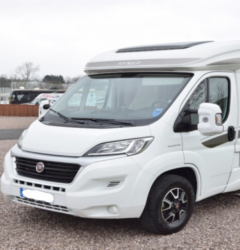I finally made it to Auxerre. This capital of the Yonne Department in the north west of Burgundy has long been on my list of places to visit in France but, for some reason, it just hasn’t happened… until now. Auxerre is a beautiful medieval city, not unlike Troyes with it’s many half timbered buildings and; it’s an easy place to walk with plenty of interest about it. Having now seen some of it, I think the city doesn’t have the profile it deserves and is too often overlooked by visitors to France in favour of lesser towns and cities. I really like the place and will definitely return when we are next down this way.
We parked the Van without any difficulty and within easy walking distance of the old town. The spires of the city’s Cathedral Saint Etienne d’Auxerre and the Abbey Saint-Germain drew us across the River Yonne to the old town by way of the Tournelle Bridge.
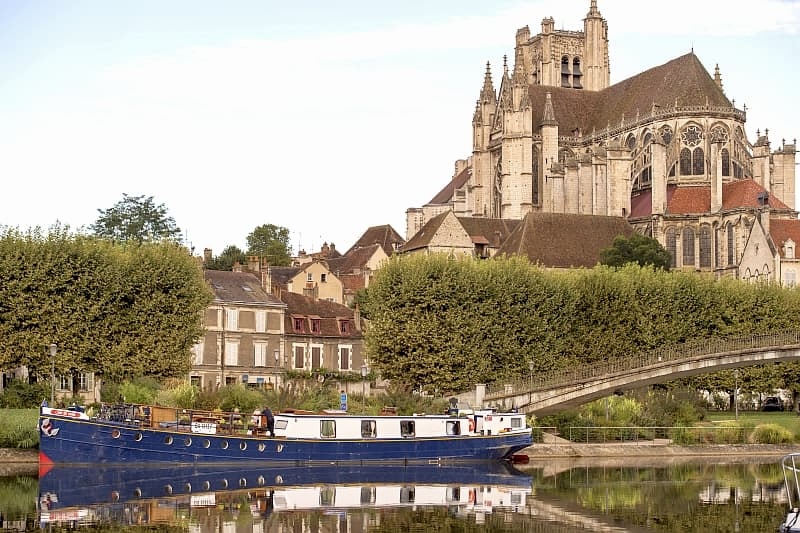
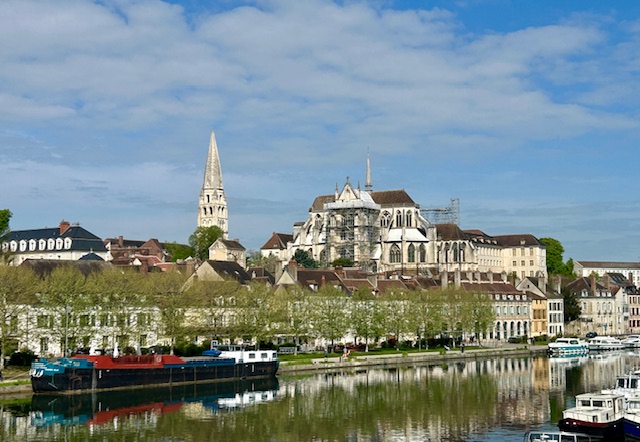
The easiest way to explore Auxerre and ensure that none of the city’s major attractions are missed is to follow a series of small bronze shields fixed into the pavement. These shields form the 5 kilometre long ‘Cadet Rousselle Route’ and they lead to the city’s numerous points of interest. Many of the shields are numbered (67 in total) and a brochure issued by the local tourist office (costing 1.50 Euros) provides background information on each of these numbered ‘points of interest’. Indeed, one numbered shield alongside a statue on Place Charles Surugue, serves to introduce Cadet Rousselle; an eccentric but very popular 18th century bailiff of the city after which the Cadet Rousselle Route was named.
The monument to Cadet Rousselle was created by the renowned French painter and sculptor Francois Brochet. He has at least two other monuments on show in Auxerre – the Restif de La Bretonne and Marie-Noel. Of the three, I favour the one to Cadet Rousselle. For my part, you can keep the other two.
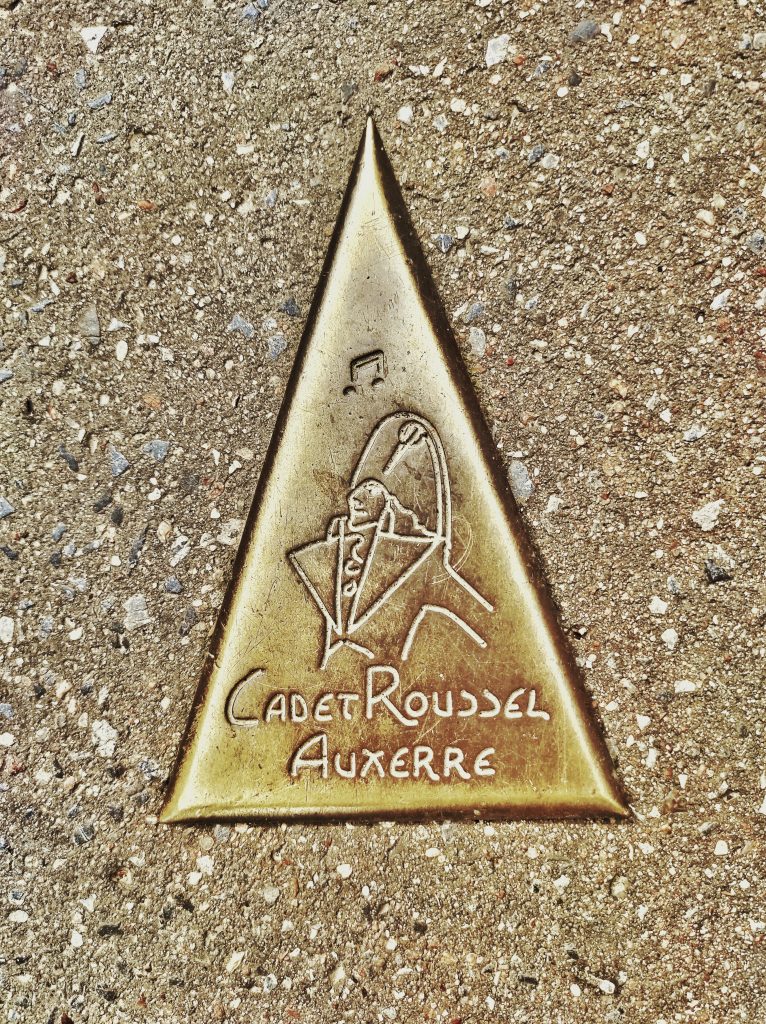
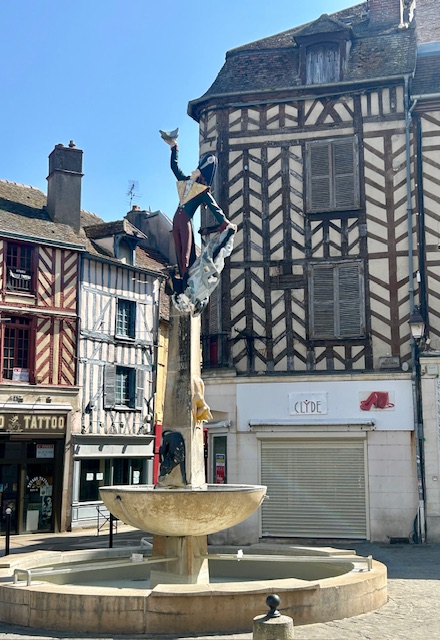
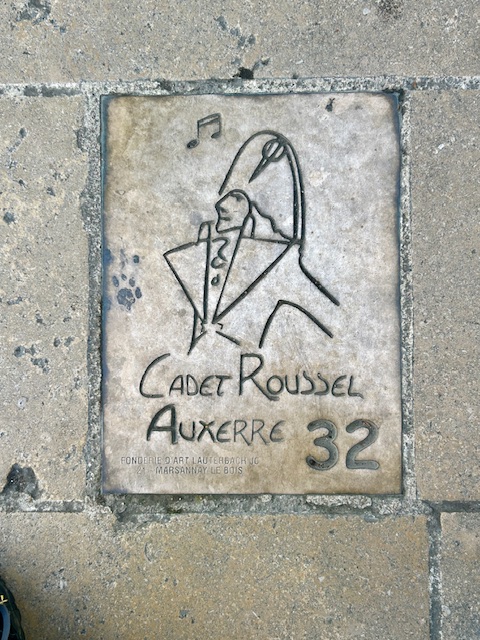
We didn’t bother with the brochure but we chanced on the Route near two of the city’s more preeminent buildings, the Hotel de Ville and the 15th century Tour d’Horloge. Of these two buildings, the colourful clock tower (Tour d’Horloge) is by far the more spectacular . The clock itself has two hands but in this case one is the solar hand which travels around the dial every 24 hours and tells the solar time while the other is about 3/4 hour behind the solar hand and identifies the phases of the moon. Don’t ask me how that works. I gave up on Physics very early in my school life.

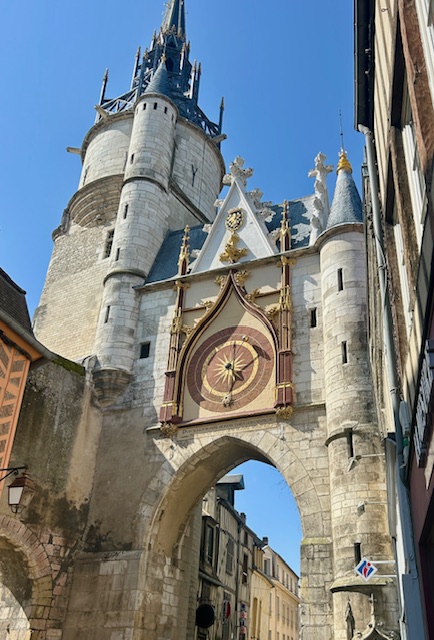
Close to the Hotel de Ville and the Tour de L’Horloge are the two other Francois Brochet monuments which I mentioned previously – Restif de La Bretonne and Marie-Noel. I know very little about the Restif de la Bretonne (except that he was a novelist around the time of the French Revolution) or Marie-Noel (except what I read about her in Auxerre Cathedral later in the day – she was a famous poet who was born, lived and died in Auxerre and was made an Officer of the Legion of Honour by that leading-edge Brexit Campaigner, General de Gaulle).
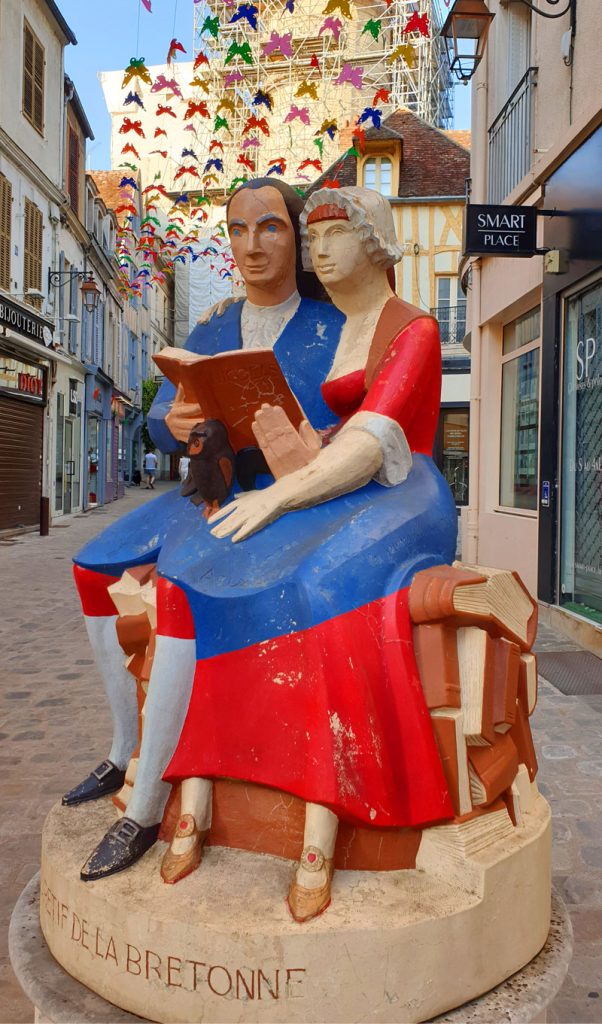
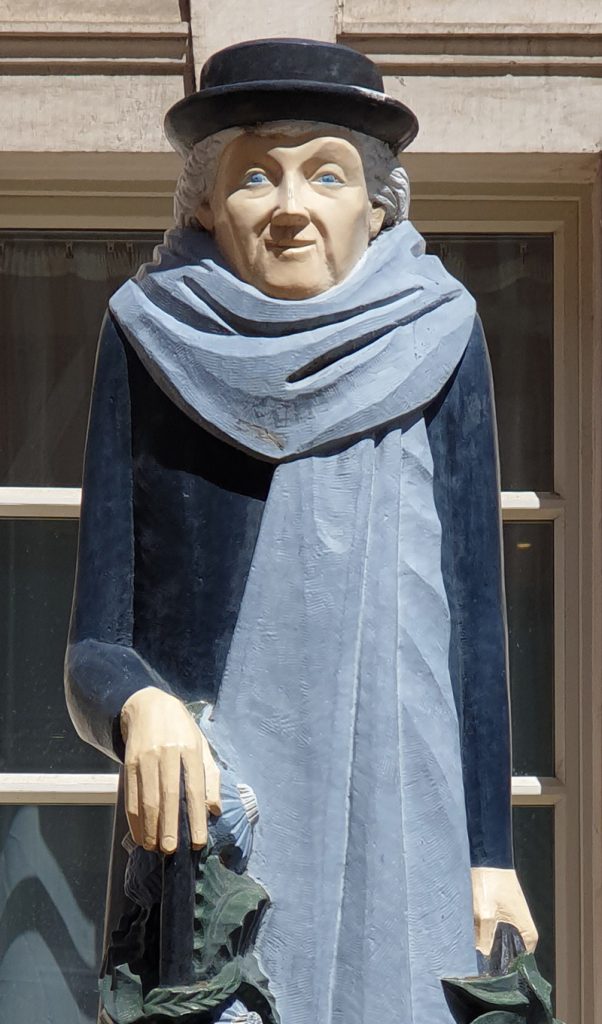
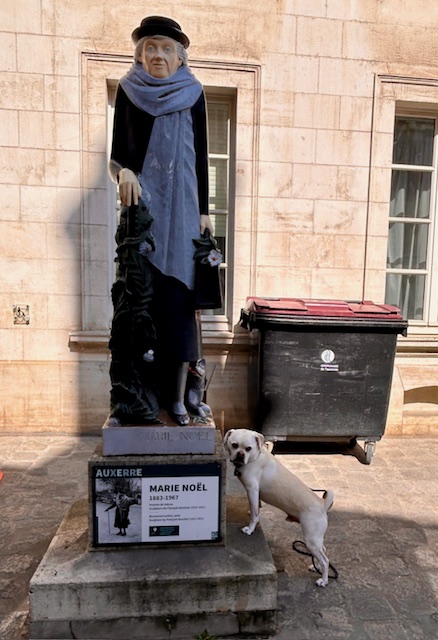
After musing over the aforementioned monuments for a while (they are unlike anything I have seen before) we followed the Cadet Rousselle Route to the 13th century Cathedral Saint-Etienne d’Auxerre (that’s Saint Stephen to those whose first language is English). It’s recognised as a masterpiece of Gothic Art (which I don’t deny) but it is the 15th and 16th century stained glass windows which most impressed me.
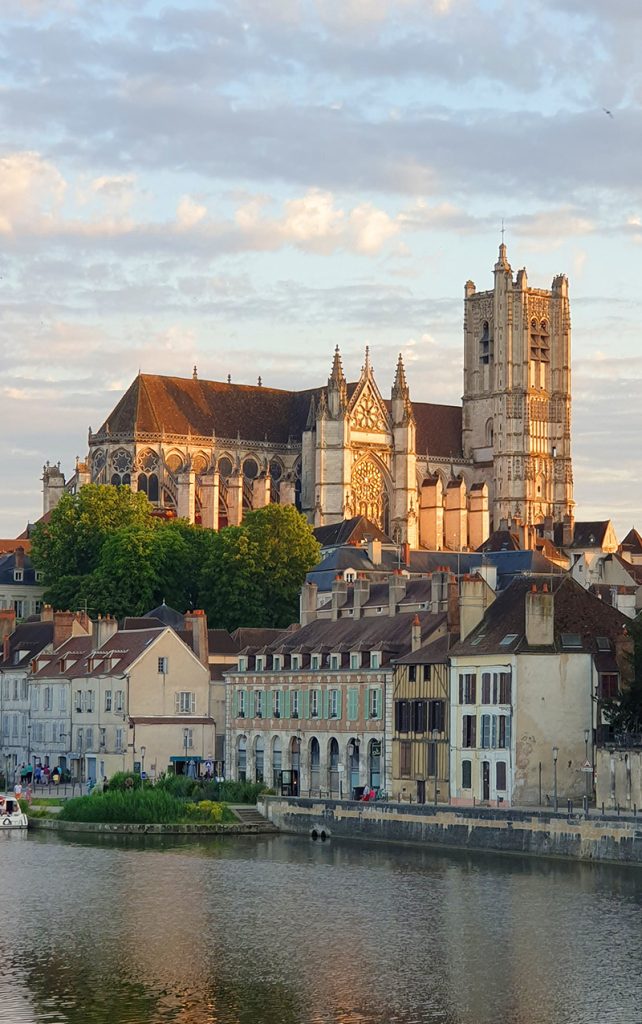
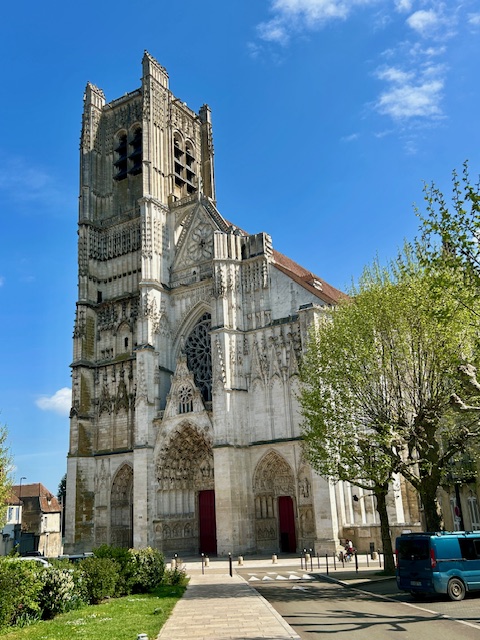
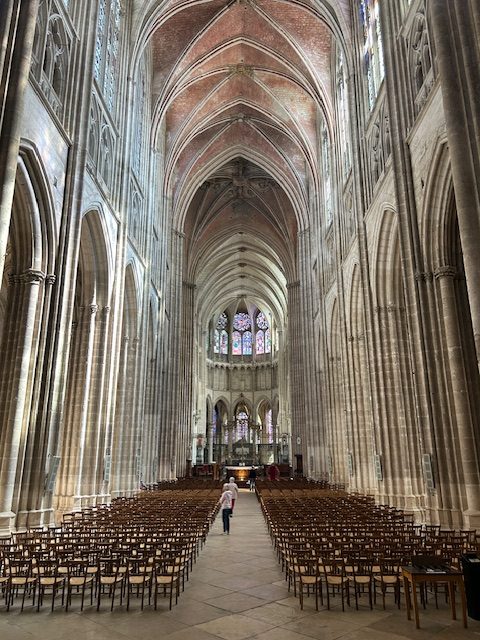

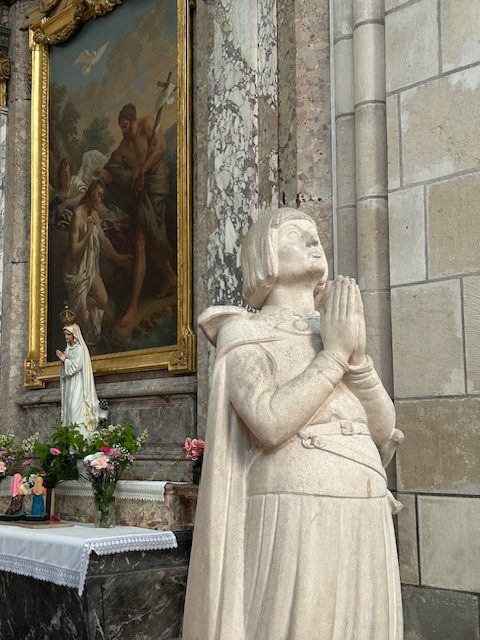
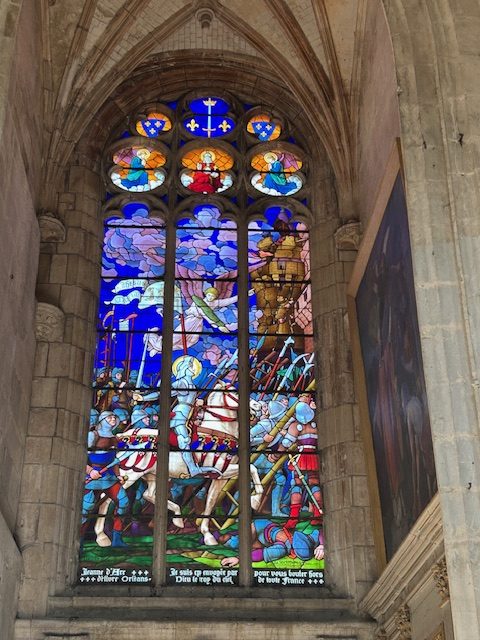
From the Cathedral it is a short walk to another must see ecclesiastical building in Auxerre (the Abbey of Saint-Germain) but follow the Rue Cochois and then the Rue d’Lyonne on the way to Abbey and pass through the Place Saint-Nicolas which has to be one of the most picturesque squares in the city. It has some wonderful photo opportunities which lend themselves to the lids of chocolate boxes and biscuit tins.
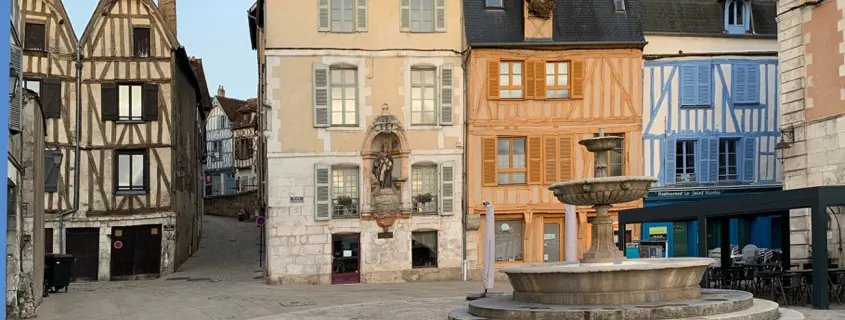
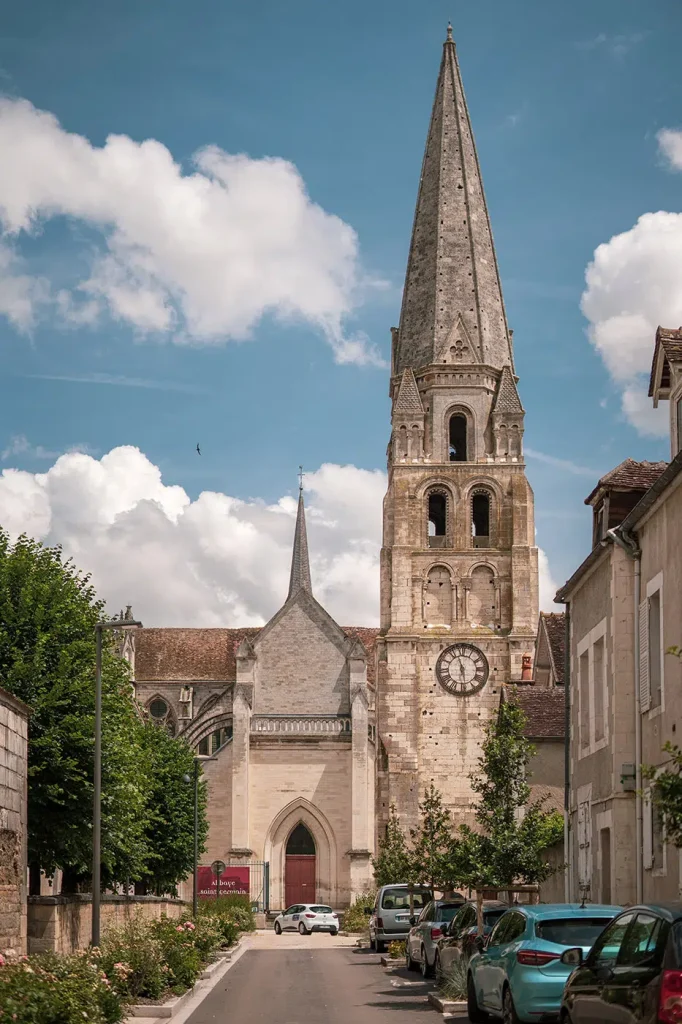
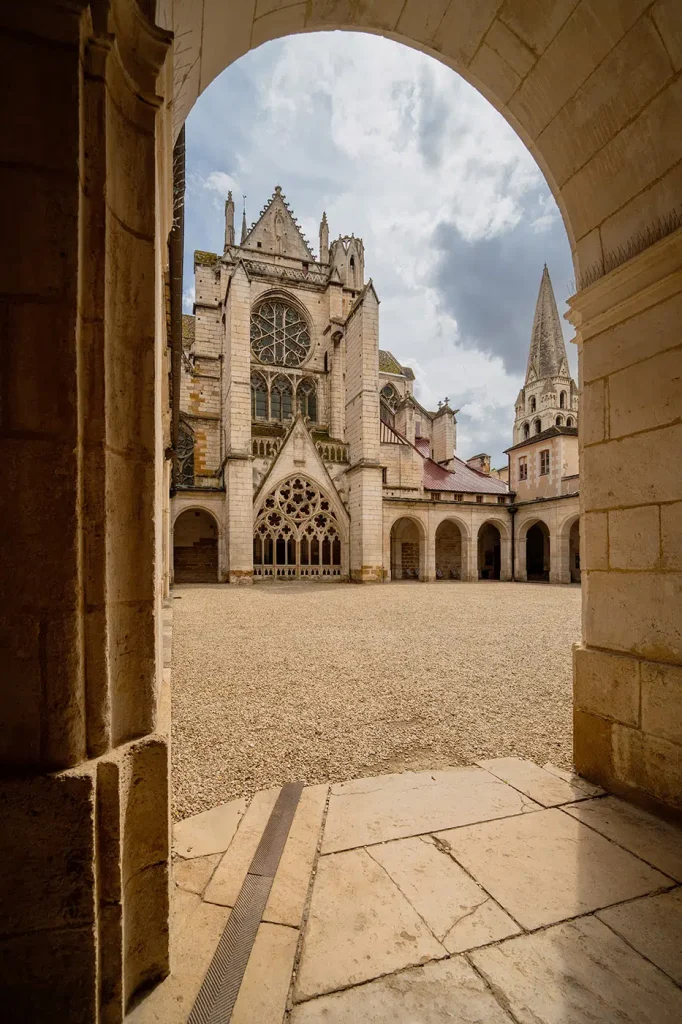
We didn’t go inside the Abbey Saint-Germain. One of the more interesting aspects of the abbey is it’s crypt and we were too late for that. So, from the abbey we retraced our steps to a small restaurant-bar near the cathedral where we could sit outside and people watch at the same time as we ate. It was time to eat if we were going to get some wine tasting in and we had promised ourselves earlier in the day that, if nothing else, we would compare the Chablis and Chitry wines.
As for lunch, I wasn’t going to make the same mistake as in Bar sur Seine a couple of days ago. No more Tete de Veau for me… not for a while anyway. It would be something a tad more boring…but safe.
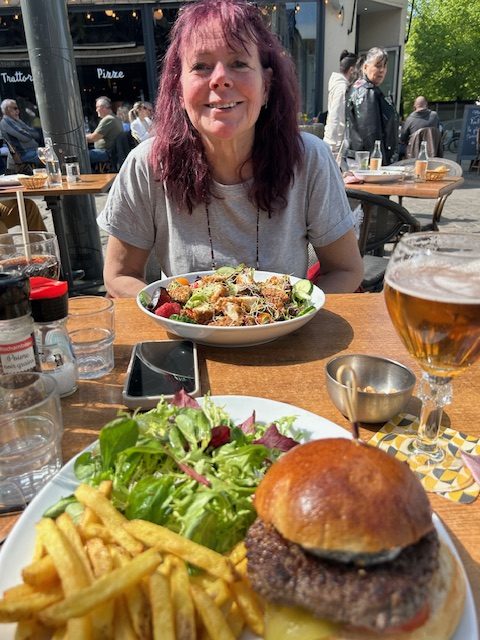
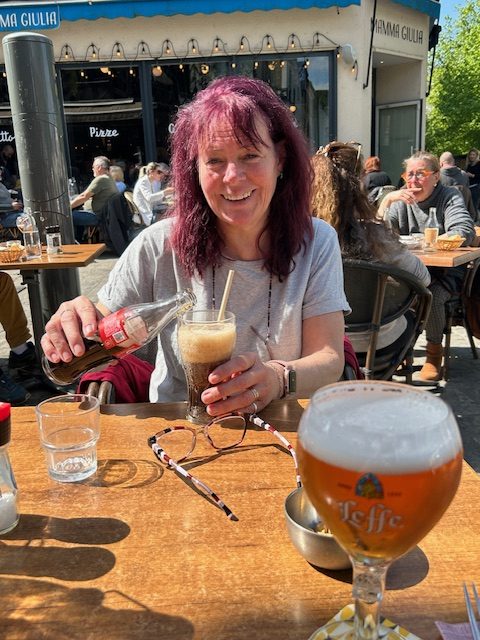
One place I regret not seeing during this visit to Auxerre is the Palais des Comtes and, in particular, a room known as Salle Eckmuhl. I make no apology for being a fan of Napoleonic history and in 1882, the last daughter of Napoleon’s “Iron Marshall” (Louis-Nicolas Davout) established a room of Davout memorabilia in Auxerre’s Palace des Comtes. Davout was born in Annoux, 30 miles south east of Auxerre and, like Napoleon, attended the military academy in Brienne Le Chateau (see the earlier blog during this Tour). The ‘museum’, for want of a better word, is still there and for my part, I’m sure I would find the place enthralling. Next time then.
